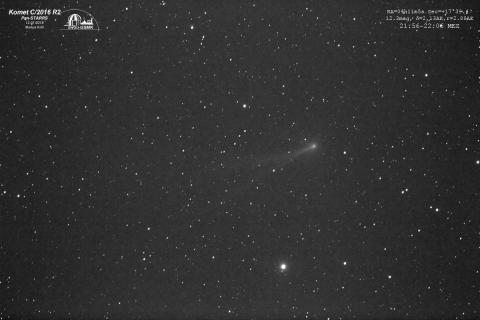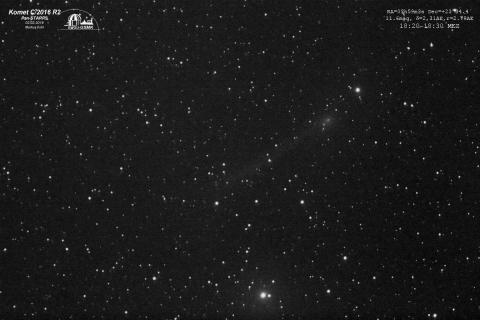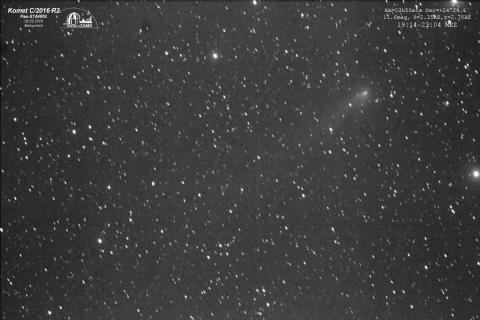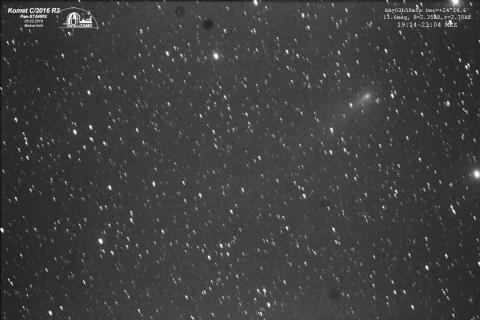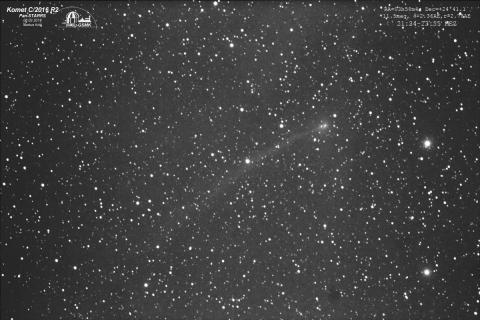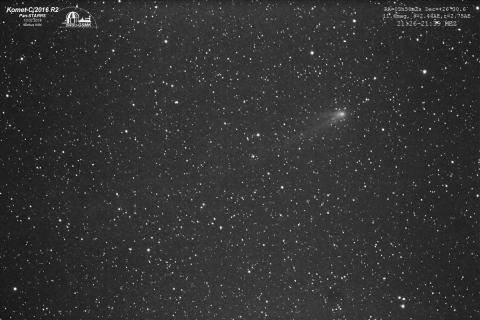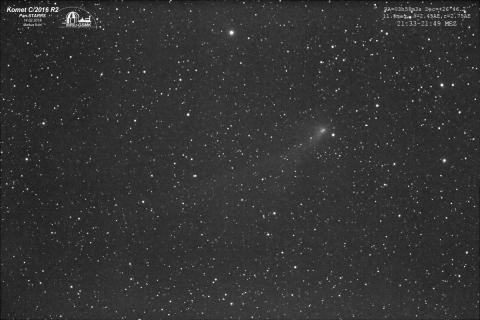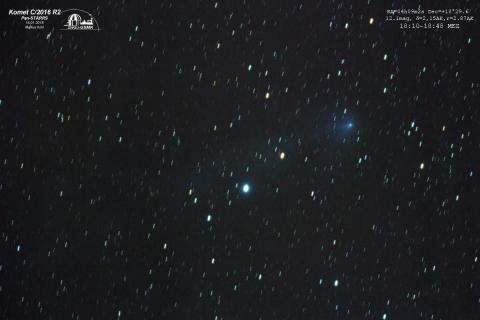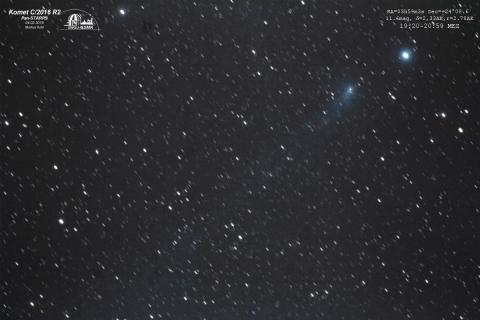Die bekannten Kometenfotografen Gerald Rhemann und Michael Jäger haben dieses Phänomen im Januar 2018 erstmals in der Kometenfotografie in einer Zeitrafferaufnahme nachgewiesen. Eine fundierte wissenschaftliche Erklärung steht noch aus. Hier die Gedanken, die sich aus Diskussionen des Objekts und Ereignisses in Hobby-Astronomenkreisen ergeben haben. Englische Sprache deshalb, weil es auf einer internationalen Kometen-Diskussionsplattform von mir so vorgestellt wurde.
The comet could have received kind of a rotation-impulse. Possibly caused by an asymmetrical "gas- jet" coming out of the comets surface, generated by the warming up-process near the sun. A common theory pictures "bubbles" of CO2/CO - gas locked in the comets water-ice-surface. The boiling point of CO2 at interplanetary conditions is about 100K, whereas H2O has a boiling point of 125K in the same circumstances. So an explosive boiling process within the carbondioxide/-monoxide-bubbles can occur.
As it is generally known, the solar wind causes a kind of shock front on the "sun face" of the comet so that the solar wind is decelerated there. According to W. Winnenburg "Einführung in die Astronomie", page 204, the magnetic field of the nucleus is deformed: compressed in its front, bent around the comet and elongated to areas of contrary magnetic polarization on the backside (opposite the sun). For this reason the type-I-tail shows directly away from the sun, because the ionic gas, that is released by the comets nucleus, is forced into this magnetic-field-areas.
On the video by Rhemann/Jäger one can easily recognize parts of the tail that are bent outwards (along magnetic field-lines?).
If the comet´s nucleus begins to rotate (due to an impulse), the magnetic field may get twisted. And so the magnetic parts of the tail are involved in rotation with a little delay as one can see in the video.
Unfortunately, the rotation of the nucleus itself will not be detectable with terrestrial equipment for prove. Indeed the "Rosetta - misson" rated a rotation period for comet 67P/Churyumow-Gerasimenko of about 12 hours, caused by variable but massive gas emissions.
The greatest problem of this hypothesis are the dimensions. The tail is about 0.02 AU (calsky.com) long and the magnetic field of a comet is weak - if any exists. 67P had no magnetic field at all, as the "Rosetta - mission" showed. So the twist of the tail by magnetic influence of the comet´s nucleus seems rather questionable.
Is it perhaps the interaction of the comet´s ionic gas with the solar wind itself, that makes the tail twisting? Does this happen as a result of the changing intensity of solar wind and variable gas-jets out of the comet, kind of funnel-effect? Are we observing an effect caused by the solar magnetic field itself? - Or are we victims of an optical illusion due to false interpretation of a 2D-time-lapse-projection of a 3D-phenomenon in our mind?
Markus Kohl, Hauzenberg, Germany (www.swgu.de)
